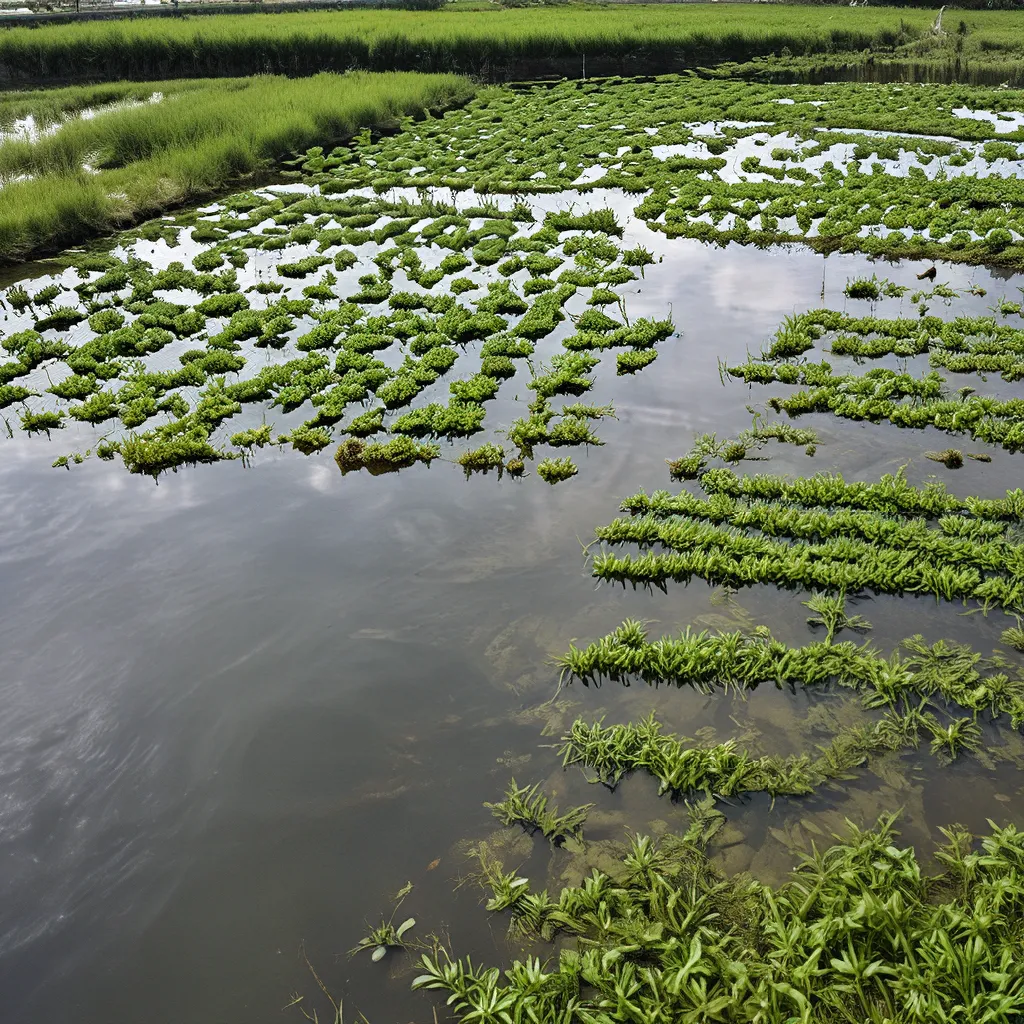
Tapping into the Blue Revolution: Unlocking the Potential of Aquaculture
As a passionate advocate for sustainable food systems, I’ve been fascinated by the concept of wastewater-driven aquaculture for some time now. This innovative approach to food production holds the promise of revolutionizing the way we cultivate and consume seafood, all while addressing pressing environmental concerns.
In a world where resources are increasingly scarce and the demand for nutritious, ethically sourced food is on the rise, I believe wastewater-driven aquaculture could be the key to unlocking a “Blue Revolution” – a transformative shift in how we approach the seafood industry.
The idea is deceptively simple: rather than discharging nutrient-rich wastewater into our waterways, we can harness its power to cultivate aquatic organisms like fish, shellfish, and even algae. By recycling these valuable resources, we can create a closed-loop system that promotes sustainability, reduces environmental impact, and enhances food security.
Numerous studies have already demonstrated the feasibility and potential of this approach, and I’m excited to explore how it could reshape the future of food production.
The Benefits of Wastewater-driven Aquaculture
As I delve deeper into this fascinating field, I’ve been blown away by the myriad benefits it can offer. From enhancing nutrient recycling to boosting food security, wastewater-driven aquaculture truly seems like a game-changer in the world of sustainable food systems.
Nutrient Recycling and Waste Reduction
One of the most compelling aspects of this approach is its ability to recycle the nutrients found in wastewater, transforming what would otherwise be waste into a valuable resource. By utilizing these nutrient-rich effluents to cultivate aquatic organisms, we can reduce the environmental burden of traditional wastewater treatment methods and minimize the release of pollutants into our waterways.
Studies have shown that wastewater-driven aquaculture systems can remove up to 90% of nitrogen and phosphorus from the wastewater, effectively turning a potential environmental hazard into a valuable agricultural resource.
Food Security and Sustainable Protein Production
As the global population continues to grow, the demand for nutritious, affordable food – especially protein-rich sources like seafood – is steadily rising. Wastewater-driven aquaculture has the potential to address this challenge head-on by providing a sustainable, scalable way to cultivate aquatic organisms.
By leveraging the nutrients in wastewater, these systems can produce large quantities of high-quality seafood without the need for extensive land, freshwater, or feed resources. This closes the loop on food production, making it a more efficient and eco-friendly alternative to traditional aquaculture or fishing practices.
Experts suggest that wastewater-driven aquaculture could play a crucial role in improving global food security and meeting the growing demand for protein-rich foods.
Environmental Benefits
In addition to the nutrient recycling and food security advantages, wastewater-driven aquaculture also offers significant environmental benefits. By repurposing wastewater as a resource for food production, these systems reduce the strain on freshwater supplies and minimize the need for energy-intensive wastewater treatment processes.
Furthermore, the cultivation of aquatic organisms like algae and filter-feeding shellfish can help to improve water quality by removing excess nutrients and pollutants from the wastewater. This “bioremediation” effect can have a cascading positive impact on the surrounding aquatic ecosystems.
Overcoming Challenges and Unlocking the Future
Of course, as with any innovative approach, there are challenges to be addressed in order to fully realize the potential of wastewater-driven aquaculture. Technological limitations, regulatory hurdles, and public perception issues are just a few of the obstacles that researchers and policymakers are working to overcome.
Technological Advancements
One of the key challenges lies in optimizing the design and operation of wastewater-driven aquaculture systems. Researchers are constantly exploring new technologies and techniques to enhance water treatment, improve nutrient recovery, and maximize the productivity of these integrated systems.
Advancements in areas like recirculating aquaculture systems (RAS), membrane filtration, and nutrient recovery technologies are crucial to unlocking the full potential of this approach.
Regulatory Frameworks and Collaboration
Navigating the regulatory landscape can also be a complex undertaking, as different jurisdictions may have varying standards and requirements for the use of wastewater in food production.
Alpha Wastewater, a leading provider of wastewater treatment services, has been at the forefront of working with policymakers and regulatory agencies to develop clear guidelines and streamline the implementation of wastewater-driven aquaculture projects.
Collaboration between researchers, industry experts, policymakers, and community stakeholders will be crucial in navigating these challenges and creating a supportive ecosystem for the widespread adoption of this innovative approach.
Public Perception and Education
Finally, public perception and acceptance of wastewater-driven aquaculture will play a critical role in its widespread adoption. Some may harbor concerns about the safety or quality of seafood produced in this manner.
Effective public education and transparent communication about the rigorous safety standards, environmental benefits, and nutritional value of wastewater-driven aquaculture will be essential to addressing these concerns and building public trust.
A Sustainable Future Powered by Wastewater
As I reflect on the immense potential of wastewater-driven aquaculture, I can’t help but feel a sense of excitement and optimism about the future of sustainable food production.
By harnessing the power of nutrient-rich wastewater, we have the opportunity to create a more circular and regenerative food system – one that reduces waste, enhances food security, and promotes the health of our environment**.
While challenges still remain, I believe that continued research, technological innovation, and collaborative efforts will pave the way for the widespread adoption of this transformative approach.
So, let’s embrace the Blue Revolution and embark on a journey to cultivate a more sustainable and resilient future for our food systems and our planet. The possibilities are limitless, and the time to act is now.